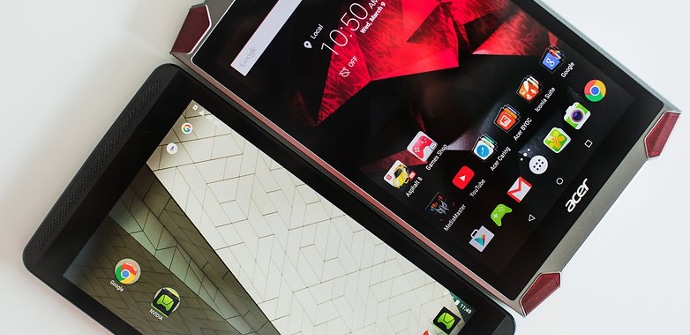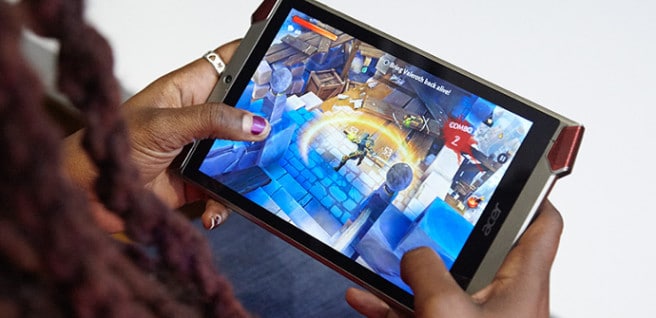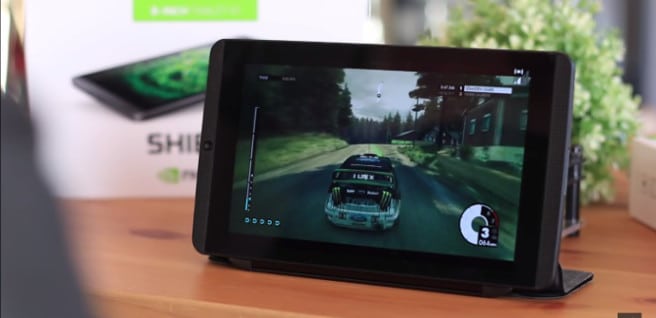
When thinking about buying a tablets We can look at many different features and sections depending on the use we want to give it and there are models that fit more in some tasks than in others. In terms of games there are two clear exponents right now in the sector: on the one hand, the tablet Shield K1 from Nvidia and, on the other, the Acer Predator 8. If you want to squeeze the catalog of Google Play games, pay attention to the following keys.
The teams will undoubtedly offer us a truly advanced performance in terms of games, but there are a series of elements that differentiate both models and that define their approach to the terrain. Let's say that Acer is committed to providing the best experience tablet-centric, while Nvidia relies on other accessories and capabilities such as compatibility with HDMI and your own mando.
Nvidia Shield K1 vs Acer Predator 8: Designing Every Game
The outward appearance and ergonomics It is a key issue in a device that we are going to use to play and with which we need to feel comfortable.
The Acer Predator 8 bets on a hairsalon gamer aggressive, with four front speakers capable of offering excellent audio and lines very inspired by their laptops of this same series, or in the peripherals that are usually used to play in an advanced way. An element in which Acer has made a lot of emphasis is also the haptic response from your terminal.
La Shield Tablet K1 choose a completely opposite approach. This device also has a magnificent front speaker but its drawing is a lot more serene. Rather than looking for shapes that make it easier to hold, the design is more of a classic tablet and covers the back with the same material as the Nexus 9 or 7 (2013) to provide a better grip. The ideal complement, as we say, is the remote.
In terms of format, both work on the same basis: screen of 8 inch Full HD. The number of pixels may not be the highest on the market but for games it is not necessary either, since none are usually designed with a resolution greater and, nevertheless, both would lose in autonomy.
Acer Predator 8 vs Nvidia Shield K1: performance compared
If we take a look at the benchmarks (we are going to stay with AnTuTu which is the most used) both teams perform very on par, although the Shield Tablet K1 tends to be a bit above with their 81.000 points by 72.000 approximates of the Acer Predator. It is something that later in the games we will not really notice, since the two tablets are going to go smoothly.
The Acer Predator 8 mounts a processor Intel ATOM X7-Z8700 quad-core clocked at 1,6 GHz, although it reaches 2,4GHz if you row at full throttle, and its GPU is a Intel HD Graphics eighth generation. For its part, Nvidia has a chip from the manufacturer itself, the Tegra K1, 4-core 2,2 GHz and a GPU Geforce Kepler 192 cores.
Android experience, games aside
In the RAM section, both one and the other add up 2GB, which is not a high figure but is that both tablets are prepared, specifically, for focus on a task: the game. The Android experience on the two tablets is quite pure, but the Acer team may have more bloatware, among which there are useful things such as a configuration tool that adapts the screen and the processor to the task we are going to perform.
For its part, the Nvidia Shield Tablet K1 is, for many users, the successor Nexus 7 natural (2013), a compact device, with very pure Android and a good rate of updates at a not too high price, around the $200. Surely the Acer Predator 8 is a tablet more dedicated to games and its price also rises a bit, up to $300.

